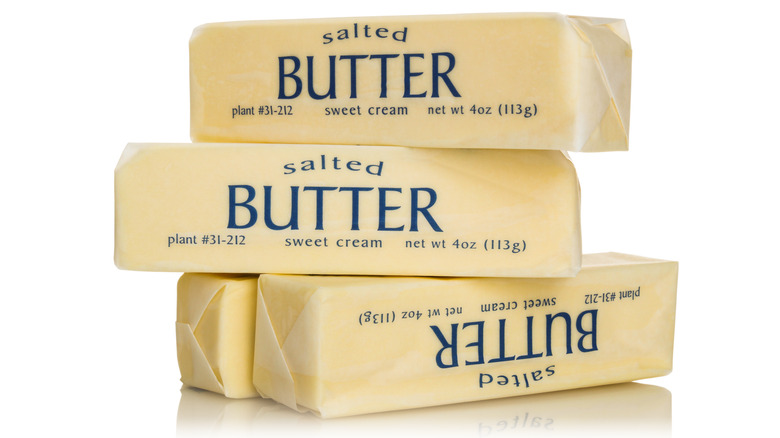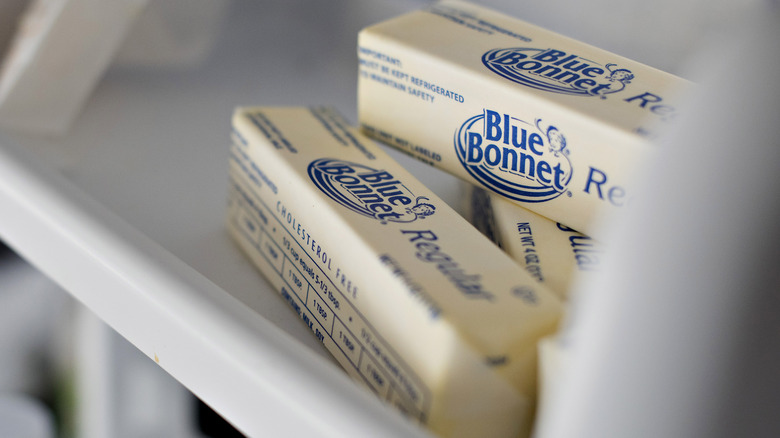The Reason Why Butter Is Always Sold In Sticks
Have you ever wondered why all the branded butter you find at the supermarket is sold in packages containing neat, rectangular sticks? Though it may not be the most burning culinary question, it's certainly an interesting one.
Long before modern refrigeration even made the grocery store possible, butter was commonly produced at home or on farms. To preserve it, the butter would be thoroughly rinsed to remove as much buttermilk (the part that would lead to spoilage) as possible before being packed tightly into sterile containers, with a heavy layer of salt between blocks. When it came time to use it, the butter would be scooped out as needed and kept in a covered dish until used up. It wasn't an exact science, but it worked for a time.
The butter we're familiar with today is a product of the modern industrialized food system. Butter is sold in sticks because they are far easier to package, transport, and stack on the cooler shelves of the freezer aisle in this form. Not only cost-effective for the producers, the consumers have an easier time using butter that's perfectly portioned in exact ½-cup or 8-tablespoon blocks. But how exactly did butter come to be stick shaped?
How block butter became a stick
Though farms and small shops have been producing this ingredient for roughly four millennia, the first factory to make butter was built near Goshen, New York, in the 1840s. But unlike the sticks we're used to today, the butter of the late 19th and early 20th century was sold in large 1-pound blocks.
Then, in 1906, a restaurant owner from New Orleans asked his butter supplier if they could split the block into 4 more manageable, quarter-pound pieces. The company obliged, and things took off from there. Several butter cutter types were invented, but the long rectangular blocks adopted by the Elgin Butter Company helped set the standard size for all butter sold. Once California's dairy industry boomed in the 1960s, the West Coast butter suppliers saw fit to resize the sticks once more, and it's common to find the long rectangular sticks in the East, and more cube-like "stubbies," as their affectionately known, in the West. Though regardless of whether you prefer East or West Coast butter, you end up with the same amount per stick. And unless you're making your own at home or have a source that sells the old-fashioned blocks, butter sold as sticks isn't going anywhere anytime soon.

